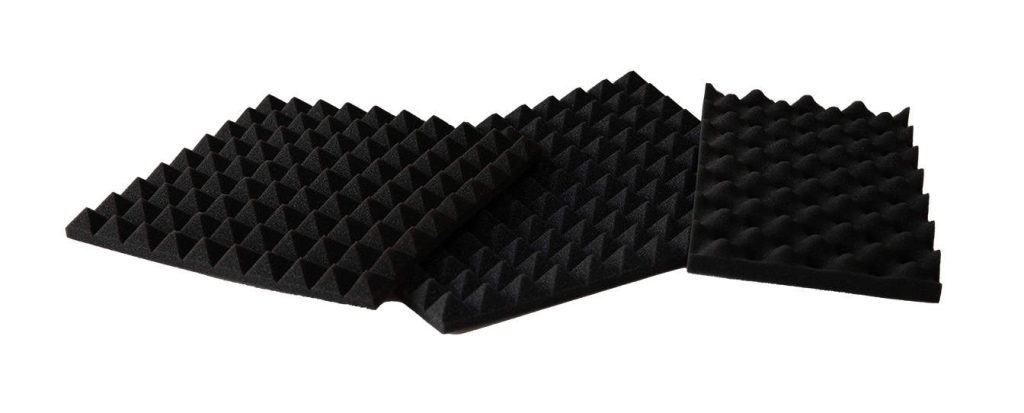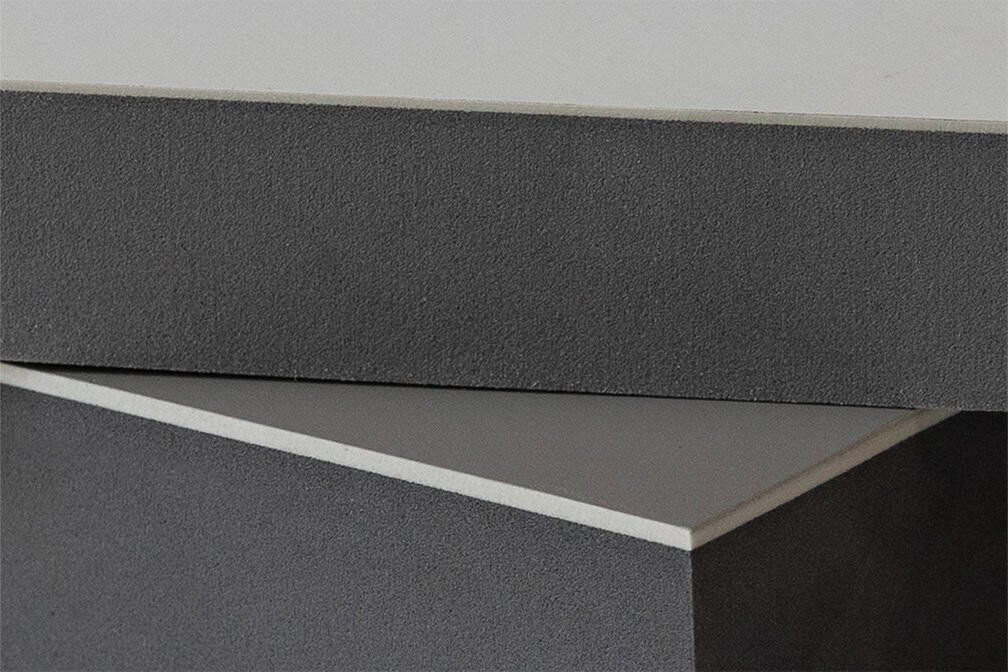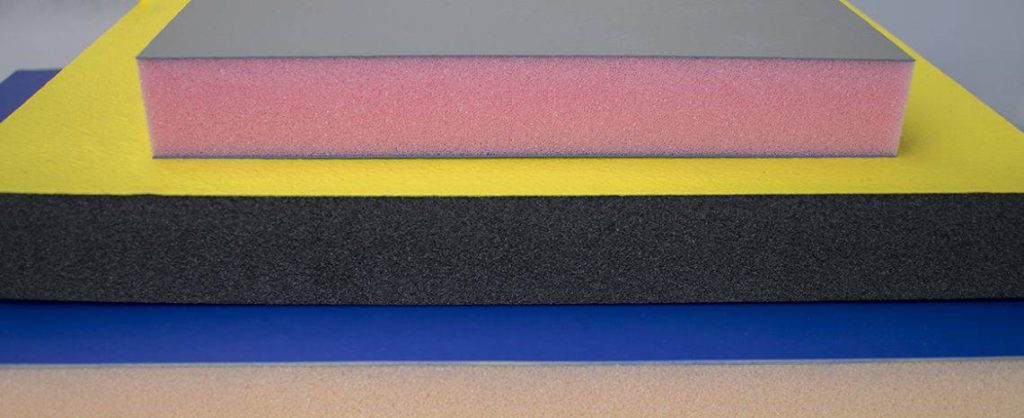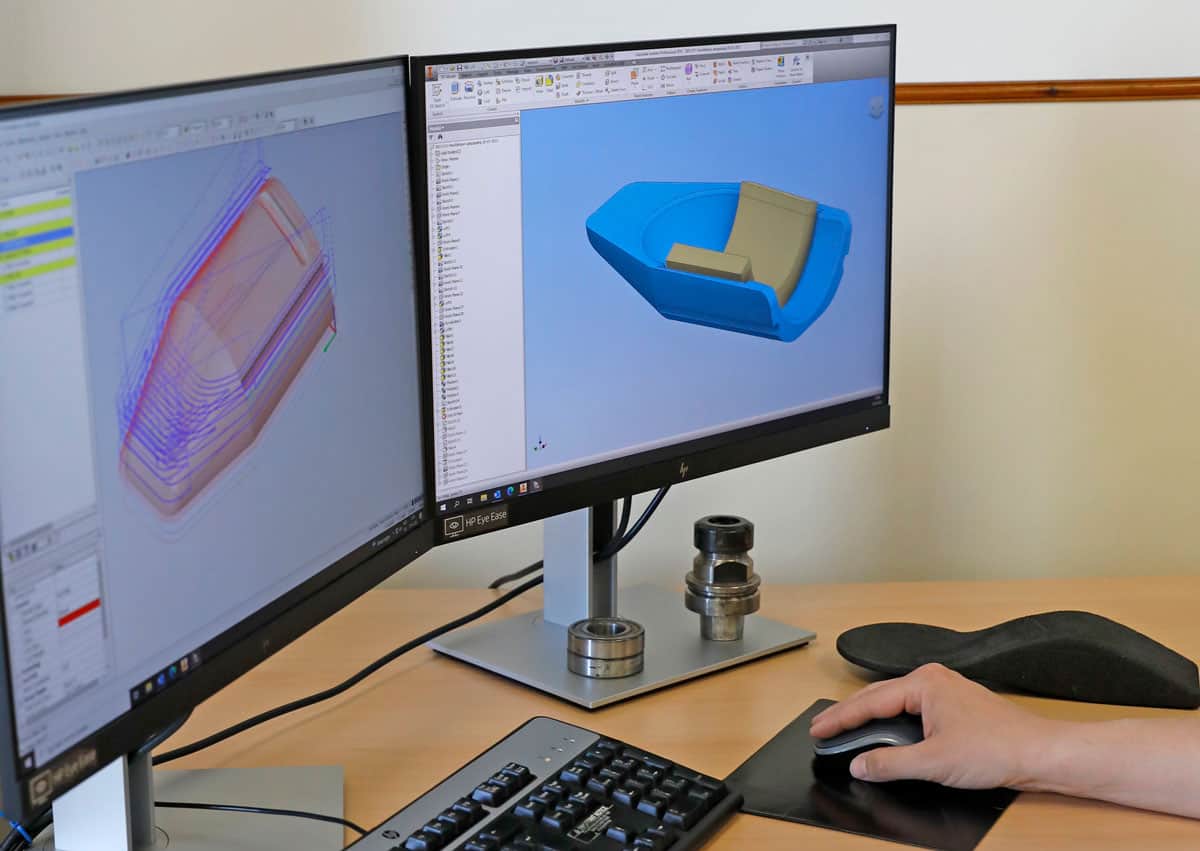Insulation
Thermal insulation with foam
Foam materials are excellent for reducing heat loss. Their low thermal conductivity allows temperature differences to be controlled. Thermal foam insulation is applied in areas such as:
- Devices and housings that generate heat
- Air ducts and HVAC systems
- Walls or enclosures of technical installations
We use foam types that maintain their insulation properties under long-term use and in varying conditions. By selecting the right combination of thickness, density, and cell structure, heat transfer can be significantly reduced.

Acoustic insulation and sound absorption with foam
Foam is ideal for absorbing sound waves. The open-cell structure of certain foam types effectively absorbs sound vibrations, contributing to quieter workspaces, noise reduction in devices, or damping in ventilation systems.
Typical applications for acoustic foam insulation include:
Enclosures for machines or compressors
Studios, meeting rooms, or server rooms
Walls and ceilings in industrial or office environments
Depending on the desired acoustic performance, we use foams with specific porosity and cell size. For sound-damping solutions within devices, we also recommend PU polyester foam, which is particularly suitable for this purpose.
Heat buffering and temperature regulation with foam
Sometimes it is important not only to keep heat out but also to smooth out temperature fluctuations. Foam can act as a thermal buffer, temporarily storing heat and releasing it slowly, stabilizing temperature changes in a space or enclosure. This function is commonly used in:
- Electronics or batteries sensitive to temperature fluctuations
- Sensor environments where temperature stability is critical
- Devices that switch on and off frequently
Vibration isolation with foam in technical applications
In addition to thermal and acoustic insulation, foam also plays a role in damping mechanical vibrations. Supporting machines, components, or devices with flexible or resilient foam absorbs vibrations and reduces transmitted noise. This extends the lifespan of components and enhances user comfort.
Vibration insulation with foam is commonly applied in:
- Damping vibrations in HVAC units or fans
- Mounting compressors or pumps
- Electronic equipment in enclosures or rack units
For these applications, we use sturdy PE foam and technical PU foam. We also offer custom solutions that combine acoustic and mechanical damping in a single foam layer.
Foam types and processing options
IFG provides insulation foams made from various materials:
- PU polyether foam: breathable, suitable for thermal and acoustic insulation
- PU polyester foam: sound-absorbing, available with flame-retardant properties
- PE polyethylene foam: closed-cell structure, water-repellent, and shape-stable
These foams can be customized through:
- Cutting, milling, or punching into the desired shape
- Laminating with protective films or textiles
- Bonding to create composite insulation panels
To learn more about the properties of our foams, please contact our customer service.


Coatings for insulation applications
In certain environments, additional protection is required against moisture, dirt, or heat. Therefore, we can provide functional coatings for insulation foams, such as:
- Water-repellent or vapor-tight layers
- Flame-retardant coatings for fire-sensitive environments
- Antibacterial finishes for ventilation systems or cleanrooms
For more information, visit our coatings pages or contact us directly.
Sustainability and recycling
As with other applications, IFG focuses on sustainability in insulation. Our foams are lightweight, contribute to energy efficiency, and are often recyclable. For more information on take-back, processing, or circular solutions, please refer to our recycling page.
Collaboration and customization
Insulation requires precision. From the first contact, we provide guidance on design, material selection, and processing options. We work with technical service providers, OEMs, and installers seeking reliable, reproducible insulation solutions.
With short communication lines, flexible production, and in-depth material knowledge, we are the ideal partner for custom thermal, acoustic, and mechanical insulation.
